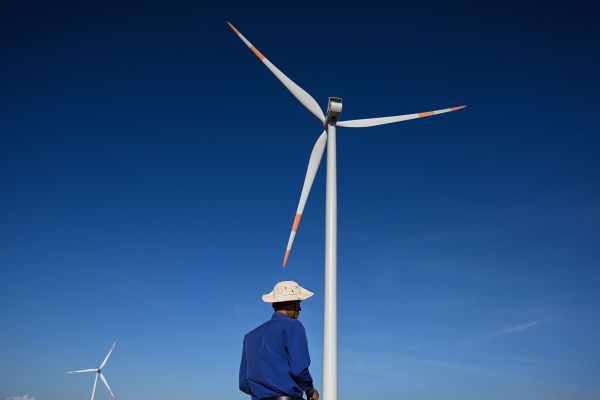In case anyone asks, 2022 was all about energy — natural gas, oil, renewables, all of it. Natural gas prices surged early as Vladimir Putin’s poorly thought-out decision to invade Ukraine slashed gas deliveries to Europe. That, coupled with high oil prices, substantially contributed to near-record-setting inflation that forced central bankers to raise interest rates.
That inflation helped spur the passage of the Inflation Reduction Act, which contains several provisions to boost renewable power, ready the grid for its arrival and foster the development of other alternative sources of energy.
Taken together, those developments — along with what investors have told me is a desire for safe returns — have sent dollars flocking to clean energy. Venture capital activity in the sector through Q3 is on track to match 2021’s record highs, according to a new report from PitchBook.
With one quarter of reporting remaining, 2022’s VC deals in clean energy hit $11 billion across 401 deals. That compares favorably with 2021’s full-year total of $15 billion across 566 deals.
This year, VC firms have been less focused on profit-taking, too, with only 19 exits for $1.9 billion, compared with $9.5 billion worth of exits across 45 sales in 2021. No doubt the SPAC bubble in 2021 and its subsequent bursting this year played a role in that dynamic. However, investors may be seeing long-term upside in clean energy tech given recent regulatory trends and positive public sentiment surrounding the energy transition.
By many measures, this year’s deal activity will probably meet or exceed last year’s, even though the total deal value in 2021 was skewed by two massive investments in fusion power — the $500 million Series E that Helion Energy closed in November 2021 and the $1.8 billion Series B that Commonwealth Fusion Systems closed in December 2021.
Investor interest in nuclear was strong in the third quarter, though the focus has shifted slightly. Fission startup TerraPower’s $750 million late-stage round took the top spot, while TAE Technologies, a fusion startup, claimed the second spot with a $250 million Series G.
Despite fusion’s tailwinds, which are likely to continue given this month’s breakthrough announcement, investors are still more interested in intermittent renewable sources like wind and solar. This year’s energy crisis is probably the driver, having caused electricity prices to surge as countries searched for alternatives to Russian gas in a tight market.
Costs for installing new wind and solar power have dropped precipitously in recent years, to the point where renewables are sometimes cheaper to build from scratch than existing fossil fuel power plants are to operate. Plus, once installed, wind and solar have predictable costs of operation, unlike fossil fuels. Together, it’s giving them ready access to capital markets.
Among intermittent renewable startups, Chinese manufacturer Gokin Solar had the quarter’s largest round. Its $370 million Series B closed just four and a half months after its Series A, highlighting just how bullish Chinese investors remain on the country’s solar panel manufacturing capabilities. Another notable deal was closed by Nightpeak Energy in June. The company, which develops and operates decarbonized power sources, was founded just this year and burst out of the gate with a substantial $200 million round.
Clean fuels, a sector expected to grow rapidly in the coming years thanks to high natural gas prices and support from the Inflation Reduction Act, has seen a record year so far, with $2.35 billion raised across 111 deals. The quarter’s top deal was landed by Monolith, a “turquoise” hydrogen producer, which led with a $300 million Series D. The company’s technology heats natural gas or biogas in the absence of oxygen to produce hydrogen gas, solid carbon and no carbon dioxide.
Hydrogen dominated the rest of the clean fuels deals with the exception of Twelve’s $130 million Series B. The startup produces liquid fuels and plastics from carbon dioxide using a technology that mimics photosynthesis.
Lastly, grid infrastructure saw $2.8 billion invested over 119 deals. That’s a significant number but down from 2021’s crazy peak, which saw $7.3 billion invested across 219 deals. At the moment, most of the deal activity in the sector is in grid-scale battery storage software that will help the grid manage new and diverse sources of electricity.
With 2023 just around the corner, expect some of these same trends to continue. Many of these deals were finalized or close to closing when the Inflation Reduction Act passed, and the law will probably put more wind in the sails of an already high-flying sector.
Fossil fuel prices will likely remain high given tight supplies (thanks to Putin’s unwillingness to admit defeat). That’ll give investors a prolonged preview of a world where fossil fuels are increasingly constrained and renewables are cost-competitive or better. As a result, this year may draw to a close matching 2021’s lofty heights but the stage is set for 2023 to hit even higher.
